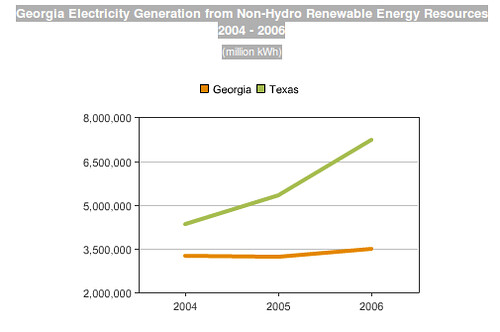 Walter Jones writes about how
Georgia Power aims to rely less on coal:
Walter Jones writes about how
Georgia Power aims to rely less on coal:
For years, solar and wind were described as unsuited for the South’s weather conditions and geography, although Georgia Power is now taking another look at them in this year’s version of it’s integrated-resource plan, a document it updates every three years.I suppose late is better than never. However, Georgia Power is turning more to nuclear and natural gas.
But why is it turning away from coal at all?
Stricter environmental regulations are also changing the economics of coal. Even without a “carbon tax” or “cap and trade” passing in Congress, the federal government is stepping up its existing authority over power plants. And an ongoing court case related to a proposed power plant owned by an independent company, Longleaf, could open the door in Georgia to regulation of carbon dioxide emissions. Any combination of those factors could lead regulators to force Georgia Power to shut down more of its older coal plants.People are finally wising up that coal is bad for us, and the company sees that affecting its bottom line.“The financial outlook for coal is grim,” Thompson said.
-jsq



